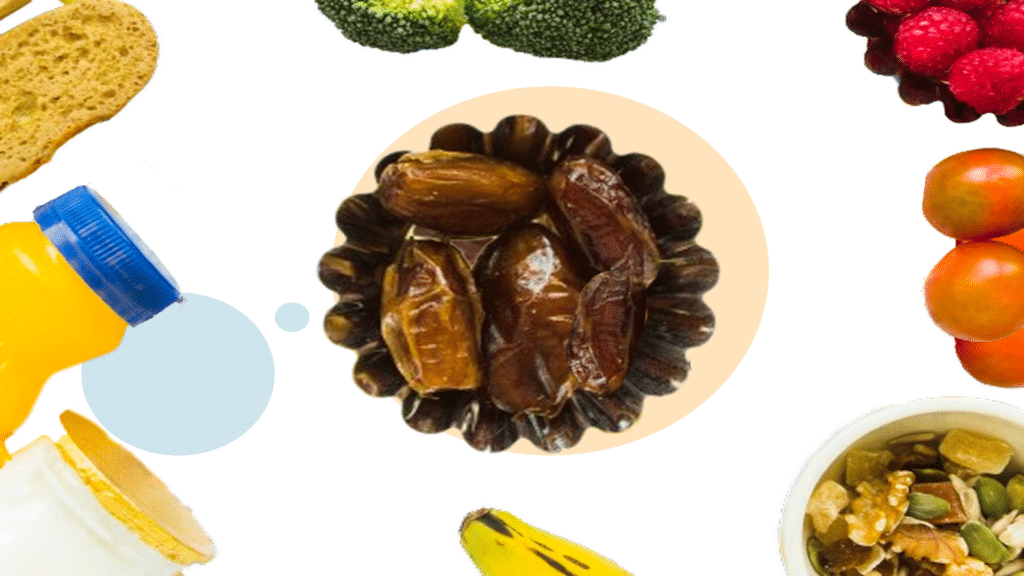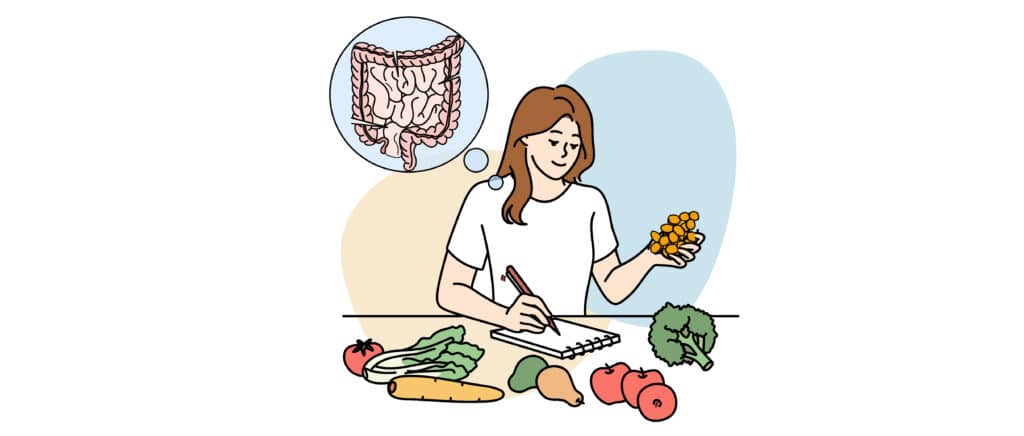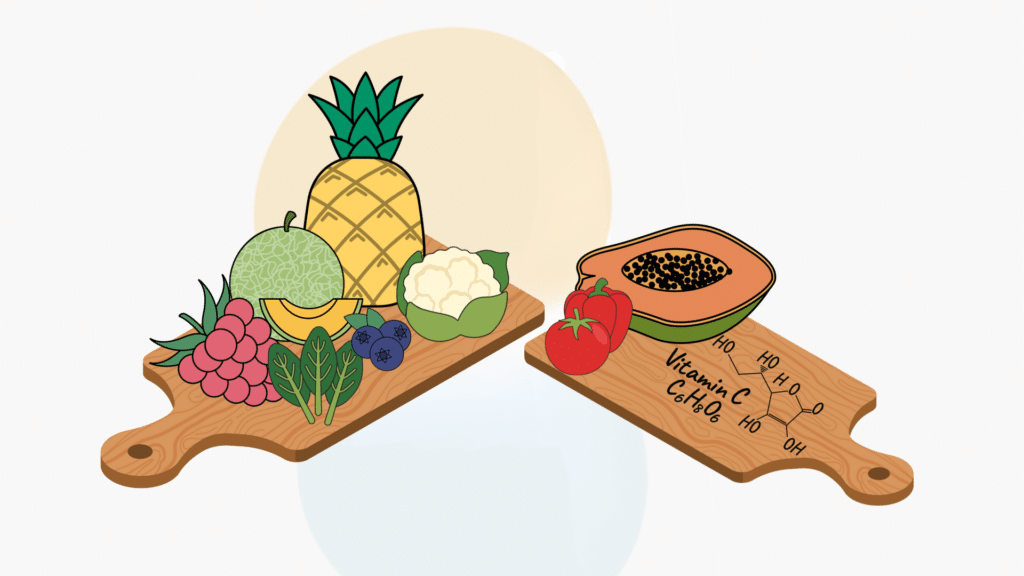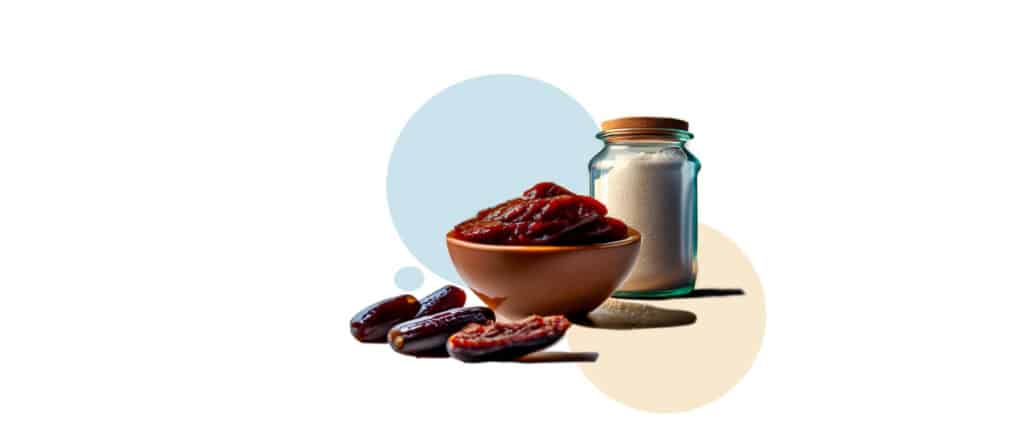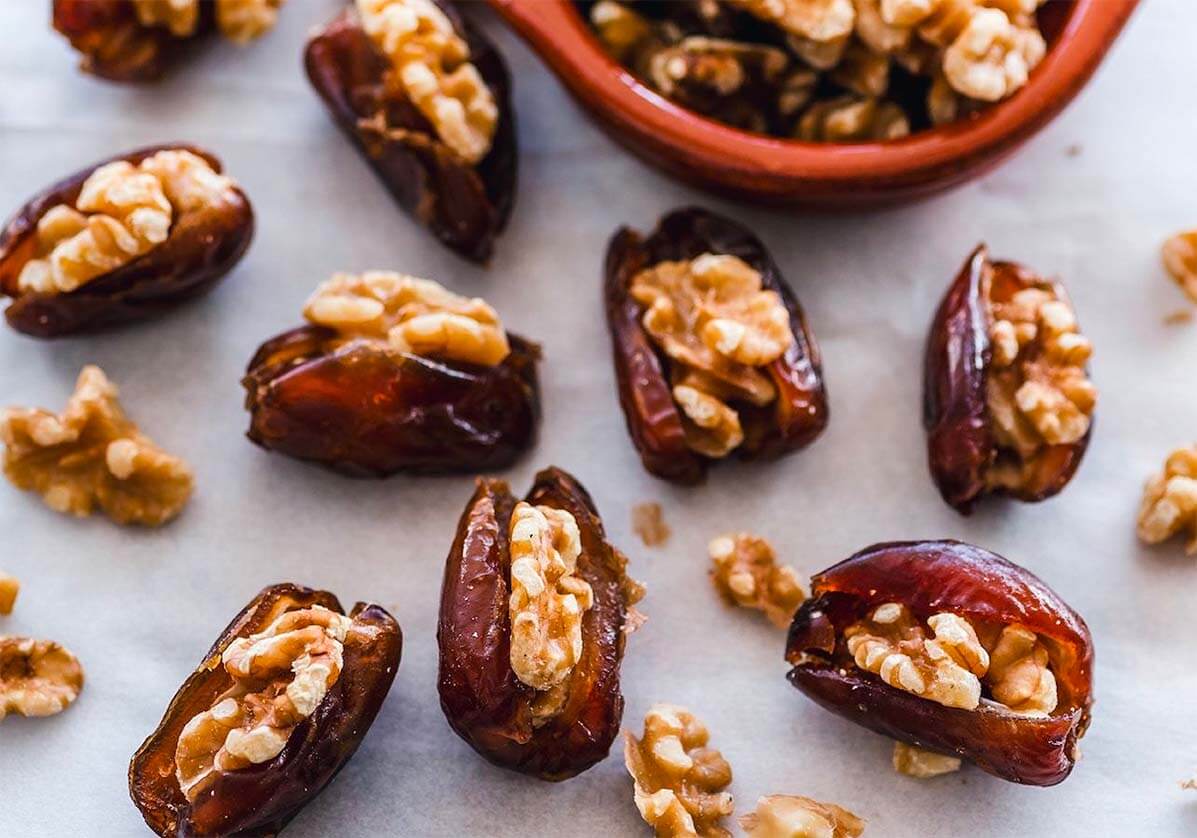Dates in a High Fiber Diet
- All About Dates Dates in Diet
- November 3, 2021
- 20 minutes read
Diet Description
Let’s look at dates in a high fiber diet. A high-fiber diet is a diet that exceeds the daily recommendation for fiber. This diet is rich in whole-grain products, fruits, vegetables. Legumes, nuts, and seeds are included too. Typically, the recommended intake of fiber is between 20-30 grams per day. However, many Americans do not hit this milestone.
Fiber is a type of carbohydrate that the body is unable to break down into smaller, usable molecules. Fiber passes through the body undigested. Because of this, it plays a large role in the regulation of blood sugar, hunger, and healthy digestion.
Fiber can be one of two types. They are either soluble or insoluble. Insoluble fiber doesn’t dissolve in water. Because of this, it is able to help move food through the digestive system. They even help prevent constipation. Meanwhile, soluble fiber dissolves in water. Its primary role is to lower glucose levels and cholesterol in the blood.
There are many health benefits associated with a high-fiber diet. These, include preventing constipation and promoting healthy digestion. This diet also lowers the risk of certain chronic diseases. Finally, following this diet helps keep energy levels stable and lowers blood sugar and cholesterol levels.
Diet Purpose
There are many benefits associated with a high-fiber diet. Following this diet may help lower the risk of several chronic diseases. It also promotes healthy digestion. Some of the most notable disease-reducing benefits include:
Reduced risk of heart disease
Many studies have shown that a high intake of dietary fiber lowers the risk of heart disease. One study performed by Harvard enlisted 40,000 male health professionals. They found that high fiber intake was linked to a 40% lower risk of coronary heart disease.
Metabolic syndrome is another risk factor for developing heart disease. You are less likely to develop this on a high-fiber diet. This syndrome includes high blood pressure, high insulin levels, and obesity. High triglyceride levels and low levels of good cholesterol may also be seen here. All of these conditions are less likely to occur with a high fiber diet.
Reduced risk of type 2 diabetes
People who experience large blood sugar level swings are at a higher risk of developing type 2 diabetes. Fiber has blood sugar-regulating effects. Thus, sweets that are high in fiber are ideal. They will help prevent blood sugar swings. They will also reduce the risk of type 2 diabetes.
Two studies were done with male health professionals and female nurses at Harvard. Results showed that a high fiber diet decreased the risk of developing type 2 diabetes by 50 percent. Cereal fiber, in particular, was shown to help lower the risk of developing this disease.
Reduced risk of colon and breast cancer
A study followed 80,000 female nurses over 16 years. They found that a high fiber diet significantly reduced the risk for colon cancer and colon cancer precursors. Another study suggested that fiber intake is beneficial during adolescence and early adulthood. They found that it lowered breast cancer risk in comparison to those who had low fiber intake when they were young.
Reduced risk of diverticular disease
Diverticular disease refers to the inflammation of the intestine. This is a common colon disorder that increases in likelihood over the lifespan. High dietary fiber intake (especially insoluble fiber) is associated with a 40% lower risk of diverticular disease.
In addition to helping reduce the likelihood of disease, additional digestion and health benefits include:
Reduced risk of constipation
Constipation is a common digestion issue. Its symptoms include difficulty in passing stools. Fiber, especially fiber in wheat and oat bran, relieves and prevents constipation.
It is recommended to gradually increase fiber intake to prevent discomfort. Dietary fiber is the “bulk” of your stools. Therefore, increasing the weight and size of stool and softening it makes it easier to pass. If you often have loose or watery stools, fiber can help absorb water. This can therefore promote more regular bowel movements.
Lower cholesterol levels
Soluble fiber is commonly found in beans, oats, flaxseed, and oat bran. It has been shown to lower “bad” cholesterol levels in the body (called low-density lipoprotein). In addition to this, lower blood pressure and inflammation levels are shown in correlation with a high fiber diet.
Increased blood sugar control
Soluble fiber absorbs sugar and helps improve blood sugar levels. Studies have shown that high fiber levels help stabilize blood sugar levels and decrease large swings. These can lead to a higher risk of developing chronic diseases.
Lower risk of obesity
Studies have shown that eating high-fiber foods helps you feel less hungry. It also keeps you satiated for longer. This stabilizes energy levels. It also promotes less “binge consumption” of sugar or other unhealthy foods.
There are many upsides to this diet. However, there are downsides that are important to consider as well. High fiber diets have been shown to decrease calcium retention from 25% to 19%. They may also cause a general decrease in mineral absorption as well.
Dates in a High Fiber Diet
When building a high-fiber meal plan, you should be incorporating dates. Dates are 4-11% fiber. This depends on the stage of ripeness.
Dates are mostly made of insoluble fiber. They also contain soluble fiber as well. We recommend adults to eat 6 to 7 dates in a day. This would account for 50-100% of the recommended daily fiber intake.
Dates have a low glycemic index. They are rich in many important vitamins and minerals, including iron, potassium, copper, magnesium, and others. Dates are also high in antioxidants. These are important for protecting your body from free radical damage to cells. Antioxidants also play a role in reducing inflammation and lowering the risk of disease.
Dates have a high energy density and a high fiber content. This allows them to provide sustainable energy without swings in blood sugar levels. This also helps prolong feelings of satiety and regulate energy and mood levels.
Dates are high in sugar, which makes them a great sweet snack. By incorporating dates into a high fiber diet, you are able to easily increase your fiber intake. This is done while providing your body with stable energy and blood sugar levels. This is also in addition to healthy vitamins and minerals.
What to Eat
When following a high fiber meal plan, it’s important to get fiber from high-quality sources. These are some foods that you might want to consider:
- Whole grains
- Fruits (including dried fruits such as dates)
- Vegetables
- Beans
- Peas
- Legumes
- Nuts
- Seeds
Processed and refined foods tend to be lower in fiber. This is because the refinement process usually removes the outer coat from the grain. Enriched foods may have vitamins added in. However, they do not add back in the fiber.
Soluble and insoluble fiber both have important roles. Therefore, it is vital to incorporate both into your diet.
Some of our top-choice foods for asoluble fiber include:
- Oatmeal
- Buts
- Beans
- Lentils
- Apples
- Blueberries
Some of our top choices for insoluble fiber include:
- Dates
- Wheat
- Whole wheat bread
- Whole grain couscous
- Brown rice
- Legumes
- Carrots
- Cucumbers
- Tomatoes
Small changes can lead to big results. This is especially true when you are planning your high fiber meal and building your high fiber meal plan menu. Some changes that can be made to your daily routine to increase fiber intake include:
- Eating whole fruits and vegetables instead of fruit juices. Fruit juices often contain many nutrients. However, they do not contain the fiber found in whole fruits and vegetables. The vegetables and fruits highest in fiber are:
FRUIT | SERVING | FIBER |
Dates | 100 grams | 8 grams |
Raspberries | 1 cup | 8 grams |
Pears | 1 medium piece | 5.5 grams |
Apples | 1 medium piece | 4.5 grams |
Bananas | 1 cup | 3 grams |
Green peas | 1 cup | 9 grams |
Broccoli | 1 cup | 5 grams |
Turnip greens | 1 cup | 5 grams |
Brussel sprouts | 1 cup | 4 grams |
- Replace white rice and bread with whole-grain products. This quick swap will greatly increase your intake of fiber. It will also allow you to make all the recipes you would normally make.
- Check the ingredient label on cereals. Make sure to choose one that has whole grains as its first ingredient. This will help weed out the overly processed and sugary options.
- Try to make a few switches a couple of times per week. A few times a week, switch that bag of chips for some raw vegetables and dip. For one or two meals, switch in beans or lentils for meat. Having just a few days a week where you make a swap or two can add up to big changes in your intake.
The daily recommendation for fiber intake is 38 grams for men under 50 years old and 30 grams for men over 50. It is 25 grams for women under 50 and 21 grams for women over 50 years old.
What to Avoid
It is wholly possible to get fiber from fiber supplements. However, we recommend against supplements. Fiber supplements can decrease the absorption of other important medications. They also don’t provide the doses of vitamins, minerals, and other beneficial nutrients from whole food sources. However, if you incorporate high-fiber whole foods into your diet and this is not sufficient, then a fiber supplement may help. It is always best to discuss this with a medical professional first.
We also recommend avoiding fortified foods, such as fortified cereals, granola bars, and yogurt. This is because they often contain an added fiber called “inulin” or “chicory root.” This type of fiber can often make people gassy or have stomach discomfort.
Conclusion
Following a high fiber diet and developing a high fiber meal plan provides many benefits. However, it is important to find healthy sources of fiber intake. Gradually increasing fiber can help prevent digestive distress. Also, intentionally making switches in your dietary habits can provide big changes over time.



